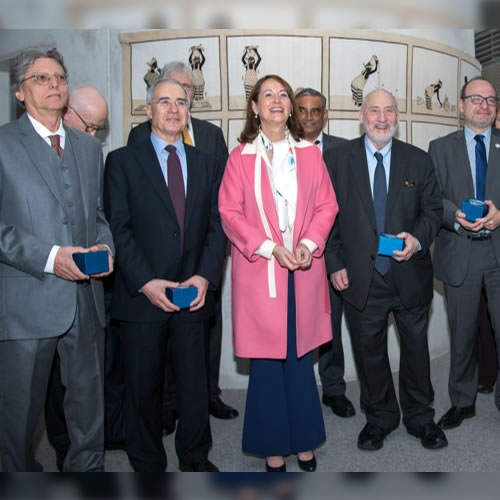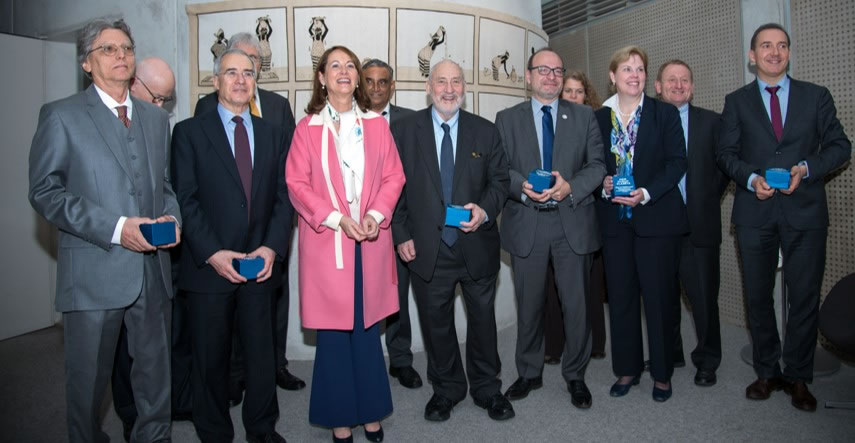 Launched in November 2016 at the COP22 in Morocco, at the invitation of the two Co-Chairs of the Carbon Pricing Leadership Coalition (CPLC) High Level Assembly, Ségolène Royal (Minister of Environment, France) and Feike Sijbesma, the High-Level Commission on Carbon Prices, led by the two famous economists Joseph Stiglitz, and Lord Nicholas Stern, gathered 11 economists, climate change and energy specialists from all over the world, to help spur successful implementation of the Paris Agreement. The commissioners have delivered its report at the end of May, 2017.
Launched in November 2016 at the COP22 in Morocco, at the invitation of the two Co-Chairs of the Carbon Pricing Leadership Coalition (CPLC) High Level Assembly, Ségolène Royal (Minister of Environment, France) and Feike Sijbesma, the High-Level Commission on Carbon Prices, led by the two famous economists Joseph Stiglitz, and Lord Nicholas Stern, gathered 11 economists, climate change and energy specialists from all over the world, to help spur successful implementation of the Paris Agreement. The commissioners have delivered its report at the end of May, 2017.
The Commission’s objective was to identify indicative corridors of carbon prices which can be used to guide the design of carbon pricing instruments and other climate policies, regulations, and measures to incentivize bold climate action and stimulate learning and innovation to deliver on the ambition of the Paris Agreement and support the achievement of the Sustainable Development Goals.
The key takeaways of the Commission’s work were:
1. Carbon pricing is an indispensable part of a strategy for reducing emissions in an efficient way.
2. Pricing carbon is not enough, and a carbon price works best in a supportive environment
3. Climate policies and carbon pricing need to be designed so that they support economic growth, development, innovation, and poverty reduction.
The main conclusions of the report were:
“Meeting the world’s agreed climate goals in the most cost-effective way while fostering growth requires countries to set a strong carbon price, with the goal of reaching $40-$80 per tonne of CO2 by 2020 and $50-100 per tonne by 2030.”
These price ranges assume that the pricing policy is complemented with well-designed policies and actions—such as efficiency standards, research and development, city design, networks, etc.—and a supportive investment climate, including finance. In the absence of these elements, the carbon-price range required is likely to be higher.
Appropriate carbon prices will vary across countries, and low-income countries may start with prices lower than this range.
Carbon prices will need to be adjusted over time, particularly upward if existing prices fail to bring about the required changes, but based on criteria that are transparent and sound.
Implementation of carbon pricing should take into account non-climate benefits, particularly reduced pollution, local context, and political economy.
Further information here
Photo of the first meeting of the Stiglitz – Stern Commission on January 31st, 2017, in Paris.
In the first line, left to right, are Emilio La Rovere, Lord Nicholas Stern, Minister Ségolène Royal, and Nobel Prize Joseph E. Stiglitz.

Find more about all members here



